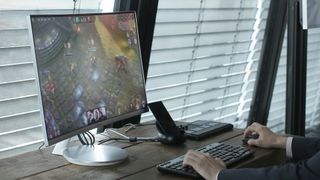Android One vs Custom UI: What are the benefits and drawbacks?
Extra features are great, but not at the expense of performance
Why might I want a Custom UI?
You usually get more customisation options
Custom interfaces offer lots of visual customisations. Android One only lets you alter wallpapers, and a few other minor elements. However, virtually every other custom UI is more flexible.

Sony lets you disable (hide) apps that you don’t want to appear in the apps menu. Huawei lets you choose between a home screen-only look like iOS, or the more common Android home screen with an app drawer.
Lots of custom UIs have themes platforms, too, for a one-tap reskins of the software. It's best to do your research on these though to make sure they're decent the whole way through, rather than just a fancy wallpaper.
There’s also currently no way to hide display notches in Android One, which is a common feature in custom UIs. LG even lets you choose different gradients for the notch drapes, really letting you make the phone yours.
There are often additional features
Third-party interfaces are a way for manufacturers to separate their phones from rivals', which means adding additional features. Some of these are often experiments so you can get smart new ideas ahead of the widespread unveiling.
Get daily insight, inspiration and deals in your inbox
Get the hottest deals available in your inbox plus news, reviews, opinion, analysis and more from the TechRadar team.
Custom UIs also inspire features that Google has integrated into Android, with split screen multitasking being a great example (Samsung’s Note range was one of the first to implement the feature).
If you want clues as to what will be in Android’s future, look at what companies like Samsung are playing about with in their phones.
Samsung’s game center is an example of a software tweak that’s genuinely useful. It lets you block notifications and other disturbances while you play and record footage, which is pretty handy if you’re chasing a high score or want to try your luck as a mobile gaming YouTuber.
Not all pre-installed apps are bloatware
You may miss some extra apps if you migrate to Android One, since not all of them are bloatware.

Sony’s Remote Play is the obvious one to mention. It lets you stream games to your Sony Xperia XZ3 or XZ2 series phone from your PS3 or PS4. It’s a free feature.
The console and phone simply have to be connected to the same Wi-Fi network. You can’t get Remote Play for Android One phones or any outside the Xperia family.
The Samsung Galaxy S9 also offers DeX, which turns Galaxy phones into desktop PCs—complete with keyboard, mouse and multitasking support—when attached to an external display via DeX dock.
Again, this kind of application is Samsung-specific. You don’t get something similar in Android One without installing a separate app that’s far less integrated.
Brought to you in association with Nokia and Android One, helping you make more of your smartphone - learn more here!
Andrew is a freelance journalist and has been writing and editing for some of the UK's top tech and lifestyle publications including TrustedReviews, Stuff, T3, TechRadar, Lifehacker and others.

